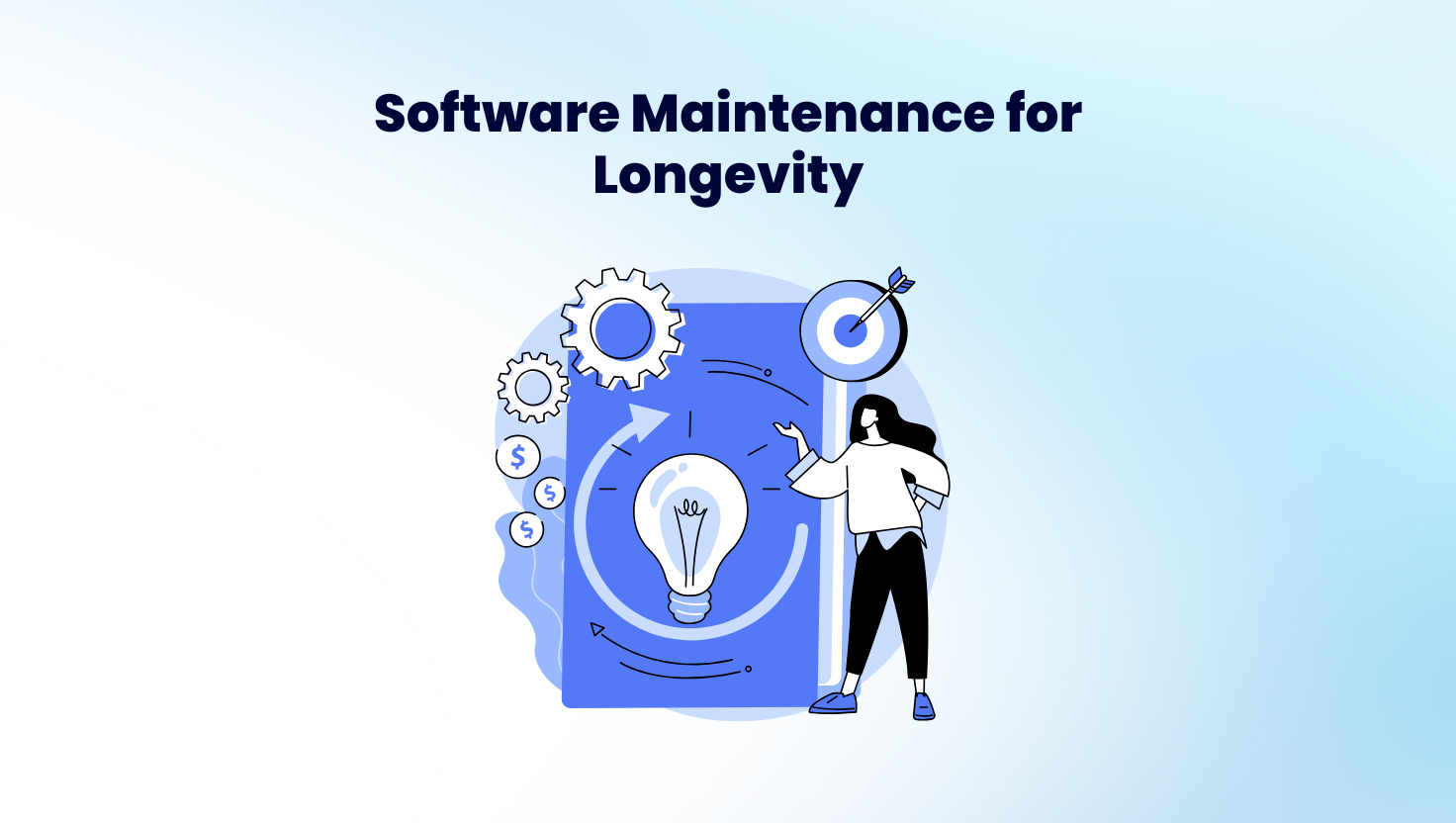
15 Mar How Regular Maintenance Extends Software Lifecycle
Software plays a crucial role in business operations, enabling companies to improve efficiency, enhance customer experiences, and maintain a competitive edge. However, software is not a one-time investment—it requires continuous updates, optimizations, and security improvements to function at its best. Without proper maintenance, software can become slow, outdated, and vulnerable to security threats.
Regular software maintenance is key to extending its lifecycle, ensuring optimal performance and long-term sustainability. By keeping software up to date, businesses can avoid unexpected failures, improve efficiency, and reduce costs associated with major overhauls or replacements.
This article explores the importance of regular maintenance, its key benefits, different types, and best practices to maximize the lifespan of software.
Why Software Maintenance is Essential
Software is constantly evolving due to technological advancements, security updates, and changing business needs. Without regular maintenance, organizations risk operational inefficiencies, security vulnerabilities, and system failures.
Consequences of Neglecting Software Maintenance
- Security Risks: Outdated software is a prime target for cyberattacks, increasing the risk of data breaches.
- Performance Issues: Unmaintained software may slow down, reducing user experience and business productivity.
- Compatibility Problems: Older software versions may not integrate well with modern tools and platforms.
- Higher Costs: Fixing a major system breakdown or replacing obsolete software is more expensive than regular maintenance.
To avoid disruptions and costly repairs, companies must establish a consistent software maintenance strategy that keeps their systems efficient, secure, and up to date.
Key Benefits of Regular Software Maintenance
Software maintenance is more than just fixing bugs—it ensures that applications stay functional, secure, and scalable. Below are the main benefits of maintaining software regularly:
1. Improved Software Performance
- Regular updates optimize code efficiency, reducing lag and system crashes.
- Fixing memory leaks and redundant processes improves system stability.
- Enhancing backend infrastructure ensures faster data processing and smoother operation.
2. Stronger Security Measures
- Frequent security patches protect against malware, ransomware, and hacking attempts.
- Implementing the latest encryption and authentication protocols safeguards sensitive data.
- Compliance with cybersecurity regulations (e.g., GDPR, HIPAA) avoids legal penalties.
3. Enhanced User Experience
- Continuous improvements keep software interfaces modern and intuitive.
- User feedback integration ensures better navigation and smoother functionality.
- Maintaining mobile and web compatibility ensures seamless accessibility.
4. Greater Scalability for Business Growth
- Cloud-based optimizations ensure scalability to handle increased traffic and data.
- Regular API updates ensure seamless third-party integrations.
- System architecture refinements allow future expansions without major rework.
5. Reduced Long-Term Costs
- Preventive maintenance helps avoid expensive emergency repairs.
- Ensuring software remains up to date delays the need for full replacements.
- Efficient coding and infrastructure management reduce operational costs.
Investing in consistent maintenance ensures that software remains an asset rather than a liability, providing long-term value.
Types of Software Maintenance
Software maintenance is categorized into four main types, each serving a distinct purpose in keeping systems efficient and secure.
1. Corrective Maintenance
- Focuses on fixing bugs, errors, and unexpected failures.
- Addresses performance slowdowns, crashes, and missing functionalities.
- Ensures a stable and error-free user experience.
2. Preventive Maintenance
- Detects and resolves potential issues before they escalate.
- Optimizes system resources to prevent slowdowns and crashes.
- Improves coding standards and software documentation for long-term efficiency.
3. Adaptive Maintenance
- Updates software to remain compatible with new operating systems and technologies.
- Ensures continued integration with third-party tools and APIs.
- Migrates legacy systems to cloud-based or modern infrastructures.
4. Perfective Maintenance
- Enhances features, UI/UX, and overall functionality.
- Implements new user-requested features based on industry trends.
- Improves reporting, analytics, and business intelligence capabilities.
Each of these maintenance strategies works together to prolong the software lifecycle, keeping it reliable and effective.
Best Practices for Effective Software Maintenance
To ensure software remains efficient, businesses must follow proven maintenance strategies that minimize risks and maximize performance.
1. Conduct Regular System Audits
- Use automated monitoring tools to track system health and detect performance bottlenecks.
- Review security logs to identify potential vulnerabilities.
- Collect user feedback to address usability concerns and feature requests.
2. Implement a Scheduled Update Plan
- Establish a routine update schedule for patches and optimizations.
- Conduct maintenance outside peak business hours to avoid disruptions.
- Maintain a detailed changelog for tracking updates and improvements.
3. Prioritize Security Enhancements
- Apply security patches immediately to prevent cyberattacks.
- Implement multi-factor authentication (MFA) for enhanced access control.
- Perform penetration testing to simulate cyber threats and identify weaknesses.
4. Optimize Software for Scalability
- Ensure compatibility with new technologies and frameworks.
- Upgrade databases and backend infrastructure for better processing speeds.
- Use cloud solutions for enhanced flexibility and cost efficiency.
5. Maintain Comprehensive Documentation
- Keep records of maintenance history, system updates, and bug fixes.
- Provide training guides for employees to maximize software usage.
- Regularly update API documentation for seamless integrations.
By following these best practices, businesses can extend software lifespan while keeping it efficient, secure, and scalable.
How PT. KDN Supports Long-Term Software Maintenance
At PT KDN, we provide comprehensive software maintenance solutions to help businesses optimize performance, security, and scalability. Our services include:
- Regular updates and bug fixes to keep systems running smoothly.
- Advanced security monitoring to protect against cyber threats.
- Cloud-based optimizations for cost-efficient scalability.
- Feature enhancements and UI/UX improvements to improve user experience.
- 24/7 technical support to address issues before they impact operations.
Whether your business relies on custom-built software, enterprise applications, or web platforms, PT. KDN offers reliable maintenance services to ensure long-term success.


Sorry, the comment form is closed at this time.